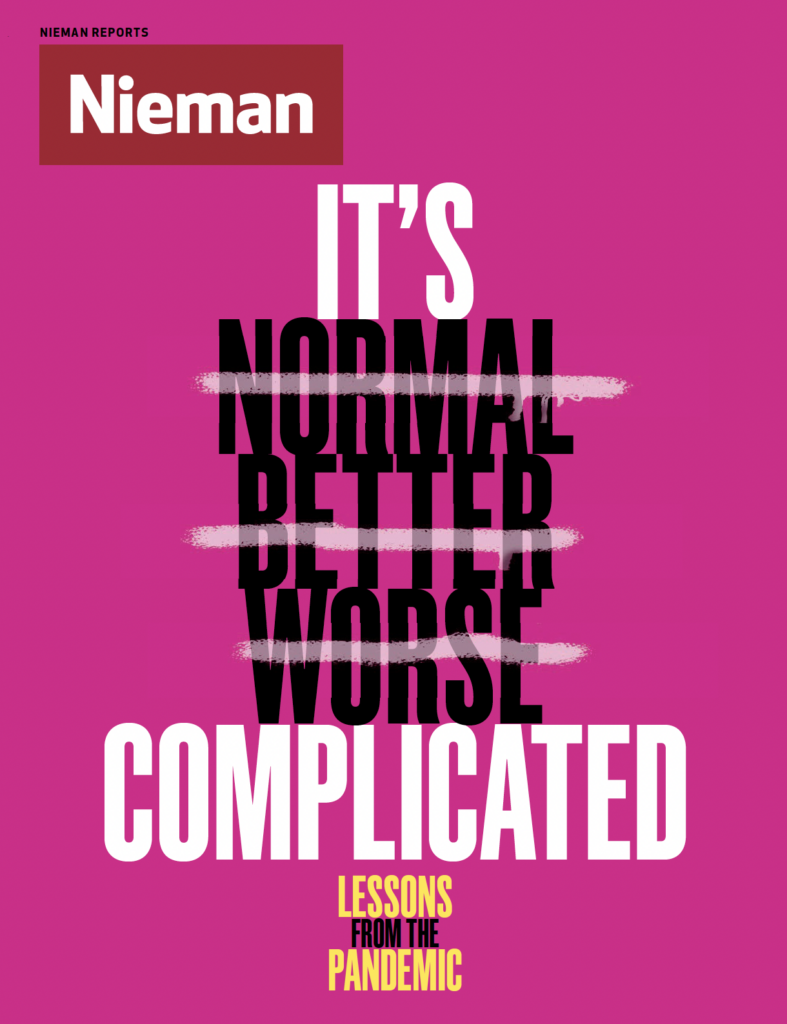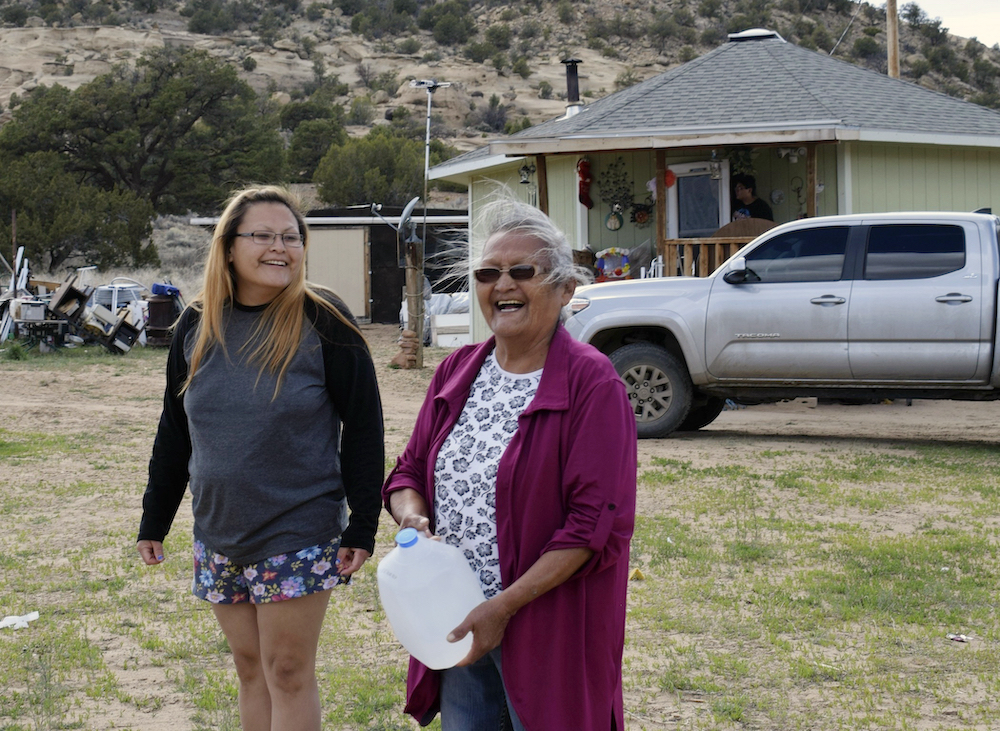
Hope that the coronavirus is finally being brought under control has prompted plans for a return to “normal.” But can, or should, journalism return to a pre-pandemic “normal?” Across newsrooms, the way we once covered education, sports, food, politics — any beat — is unlikely to be sufficient for the new moment we are entering.
What are the lasting lessons of this time? And how should we do journalism differently moving forward? These are the questions Nieman Reports explores in our essay series, Lessons from the Pandemic.
Not long ago, at the height of the pandemic in 2020, the tribe had the highest infection rate per capita in the United States — worse than that of New York and New Jersey and everywhere else the virus left its mark. At the time of this writing, the death toll from Covid-19 within the Navajo Nation is more than 1,300.
For me, as managing editor of Native News Online, a news outlet that covers Indian Country, it was one of the brighter days of the past year. The morning my editor Levi and I read the news we rejoiced over our daily video call. For nearly a year, Levi has published what we call our “Navajo update,” a daily article about Covid-19 in the Navajo Nation. And every day, for nearly a year, Levi has stayed up late waiting for the tribe to release its latest case numbers, reporting the ebbs and flows facing Navajo citizens.
Make no mistake, the coronavirus has impacted Indigenous communities far and wide, but for much of 2020 the crisis in the Navajo Nation was impossible to ignore. This meant a barrage of media coverage focused on the tribe and the pandemic sweeping all corners of Indian Country — much of it first reported by local sources, such as the Navajo Times and other tribal newspapers, and then by larger outlets like The New York Times and The Washington Post.
It’s no secret that Native Americans receive very little national news coverage and are often simply erased from nationwide conversations about race in this country. (Take CNN’s usage of the phrase “something else” to refer to voters who are not white, Latinx, Black or Asian during last year’s presidential election, for instance.)
But even when Native Americans do make national headlines, the reporting often relies on age-old stereotypes. The story becomes about our suffering, about all the problems that exist in our communities, or about how we stand in the way of America’s pipelines and its future.
The journalism about Covid-19 in Indian Country, especially in the Navajo Nation, brought up many of these same discussions. Americans learned, many of them perhaps for the first time, about how many Navajo citizens lack access to clean water, or about how one in three homes on the reservation doesn’t have a tap or toilet. They learned about the reservation’s substandard housing problem and the overcrowding in those homes, subverting all efforts at social distancing. They also likely learned about the numerous health disparities that have existed in tribal nations for generations (and about how the Indian Health Service shut down key services at a hospital on Acoma Pueblo in the middle of a pandemic), and about how all of this exacerbated the crisis rolling through Indian Country.
Despite the events of the past year, there is hope on the horizon. I can feel it in our communities, and I can feel it among my Indigenous colleagues. Many of us have received our second dose of the vaccine and many of our communities are approaching being fully vaccinated, so much so that some tribes are now offering the vaccine to non-Indigenous people.
Much has been lost in our communities, this is true. When workplaces open up again and the first beat of a live in-person powwow sounds off, there will be many who are not there with us — family, friends, relatives, cousins, aunties, elders, tribal leaders, knowledge keepers, and historians. As part of my Nieman Visiting Fellowship, I’m creating an online memorial to remember the Indigenous elders we have lost to Covid-19. The loss of these citizens — the bearers of our languages and traditional ways — due to coronavirus has impacted all of our communities, both culturally and emotionally. The goal is to share their stories and the impact their absence will have on their communities and the people closest to them.
For so many national news outlets, the reopening will mean the job is done. Their reporters will move on until the next existential crisis strikes our lands. They are there when the ship in Indian Country capsizes and sinks but are absent when it’s finally dragged out of the water, rebuilt, and made even stronger.
At this point, every newsroom across America has an opportunity to do things differently, to bypass a harmful industry trend. Every journalist should be asking themselves: What’s next for Indian Country, and how do I tell that story?
For us at Native News Online, the work continues. The true impact of Covid-19 in Indian Country may take years to fully understand, largely because of a severe lack of data. We will continue reporting on the victories in Indian Country. We’re covering the growing number of tribes setting up their own broadband networks, which will make telehealth and distance learning possible; efforts to reclaim food sovereignty and increase access to healthy traditional foods; and the various ways tribal governments will be spending the $20 billion allotted to them through the American Rescue Plan — all of which should be on every newsroom’s editorial calendar.
We will be there when the powwows and cultural festivals kick off, and we will continue examining the impact Covid-19 has had on our elders and languages and on major industries such as casinos and tourism.
When my editor Levi and I celebrated the Navajo Nation’s zero-case milestone a few weeks ago, we considered discontinuing our daily “Navajo update.” We thought, who wants to read good news going forward?
We quickly decided against the idea. Indian Country has lost a lot over the past year, but equally important are the efforts being made to ensure that what was lost to coronavirus is being reborn. This is just as newsworthy.
Kyle Edwards, a 2021 Nieman Visiting Fellow, is managing editor at Native News Online.
Lessons from the Pandemic
Hope that the coronavirus is finally being brought under control has given rise to planning for a return to “normal.” But can, or should, journalism return to a pre-pandemic “normal?” Across newsrooms, the way we once covered education, labor, theater—any beat—is unlikely to be sufficient for the moment we are entering. What are the lasting lessons of this time, and how should we do journalism differently? These are the questions to which Nieman Reports is seeking answers in our essay series, Lessons from the Pandemic.



